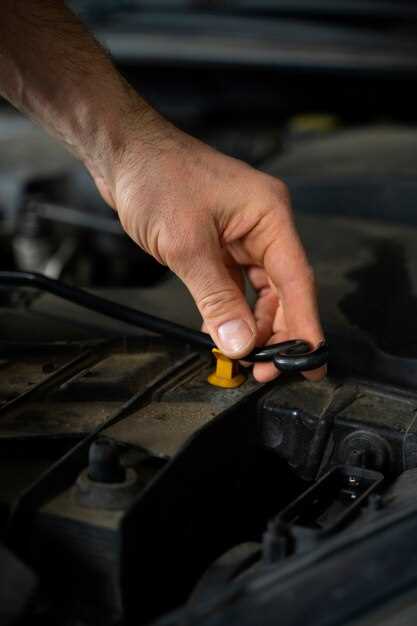
Proper maintenance of your transmission system is crucial for ensuring its longevity and optimal performance. The gearbox, a central component of this system, plays a vital role in transferring power from the engine to the wheels, facilitating smooth driving experiences. Neglecting its upkeep can lead to costly repairs and decreased vehicle efficiency.
Regular checks and maintenance practices are essential for preventing wear and tear on the gearbox. This includes monitoring fluid levels, checking for leaks, and making sure that the transmission fluid is clean and at the proper viscosity. Using the right type of fluid, as specified by the manufacturer, can greatly extend the life of your transmission.
In addition to fluid maintenance, keeping an eye on the signs of potential issues is equally important. Unusual noises, delayed shifting, and warning lights on the dashboard can all indicate problems within the gearbox. Early detection of these symptoms can prevent more serious damage, ensuring that your transmission system remains functional for years to come.
Regular Fluid Checks and Changes for Optimal Performance

Maintaining the optimal performance of your gearbox and transmission is heavily dependent on regular fluid checks and timely changes. The lubricating fluid serves several critical roles, including reducing friction, dissipating heat, and preventing wear on internal components.
Regular checks should be performed to ensure the fluid is at the correct level and is free from contaminants. A low fluid level can lead to inadequate lubrication, overheating, and ultimately mechanical failure. It’s advisable to inspect the fluid every 3,000 miles or as per the manufacturer’s recommendation.
In addition to checking the fluid level, it is essential to examine the fluid quality. Transmission fluid should maintain a bright red color and be free from burnt odor. If the fluid appears dark or has a burned smell, it indicates that it has oxidized and lost its effectiveness, necessitating an immediate change.
Changing the transmission fluid at regular intervals helps to avoid the buildup of harmful debris and metal shavings that can cause significant damage to the gearbox. Most manufacturers recommend changing the fluid every 30,000 to 50,000 miles, but this can vary based on driving conditions and vehicle type. Following these guidelines ensures that your gearbox operates smoothly and prolongs its lifespan.
In conclusion, regular fluid checks and changes are fundamental for maximizing the performance and longevity of your gearbox and transmission. By adhering to a consistent maintenance schedule, you can prevent costly repairs and enjoy smoother operation throughout the life of your vehicle.
Identifying Signs of Wear and Addressing Issues Promptly

Regular care of your gearbox is essential to ensure its longevity and optimal performance. However, even with diligent maintenance, wear can occur over time. Recognizing the signs of wear early can prevent more significant issues and costly repairs.
Unusual Noises: One of the first indicators of a problem is unusual noises during operation. Grinding, whirring, or clunking sounds can signal worn gears or insufficient lubrication. If you notice these sounds, it’s crucial to investigate the source immediately.
Difficulty in Shifting: If shifting gears becomes challenging or feels imprecise, it may indicate wear on the synchronizers or other internal components. Addressing this issue promptly can prevent further damage and ensure smooth operation.
Fluid Leaks: Regularly check for any fluid leaks around the gearbox. A decrease in fluid levels can impair lubrication, leading to increased friction and damage. If you find any leakage, identify the cause and replenish fluids as necessary.
Overheating: Excessive heat can cause significant damage to the gearbox. If you notice that the gearbox is running hotter than usual, this could be a sign of worn bearings or insufficient lubrication. Addressing overheating issues quickly can extend the life of the gearbox.
Warning Lights: Many modern vehicles have warning systems that alert the driver to potential gearbox issues. Pay attention to any dashboard indicators and follow the manufacturer’s recommendations for addressing these alerts.
By identifying these signs of wear and addressing issues promptly, you can ensure the gearbox remains in good working condition. Regular inspections and timely intervention are vital for maintaining your gearbox and maximizing its lifespan.
Choosing Compatible Parts for Maintenance and Repairs
When it comes to maintaining your gearbox, selecting compatible parts is crucial for ensuring its longevity and reliable performance. Using parts that are specifically designed for your gearbox model helps to avoid compatibility issues that can lead to more significant problems down the line.
First and foremost, always refer to the manufacturer’s specifications when sourcing replacement components. Many manufacturers provide detailed lists of compatible parts for their gearboxes, which can significantly reduce the risk of errors during repairs or maintenance. This practice not only aids in maintaining performance but also contributes to the overall care of your gearbox.
Another important aspect to consider is the quality of the parts you choose. Opting for original equipment manufacturer (OEM) components is often the best choice as they are designed to meet the exact standards required by your gearbox. Using high-quality aftermarket parts can also be an option, but ensure they have been thoroughly tested for compatibility and performance.
Moreover, when performing gearbox maintenance, it’s essential to maintain uniformity with all replacement parts, including seals, bearings, and gears. Mixing brands or using mismatched components can disrupt the intricate mechanics of the gearbox, leading to decreased efficiency and potential damage.
In addition, considering the expertise of the supplier or mechanic you’re working with is vital. A knowledgeable professional can guide you in selecting the right parts tailored specifically to your gearbox’s needs, ensuring that your maintenance efforts yield the best results.
In summary, choosing compatible parts plays a significant role in the effective maintenance and repair of your gearbox. By prioritizing compatibility, quality, and professional advice, you can enhance the lifespan of your gearbox while ensuring it operates smoothly and efficiently over time.
